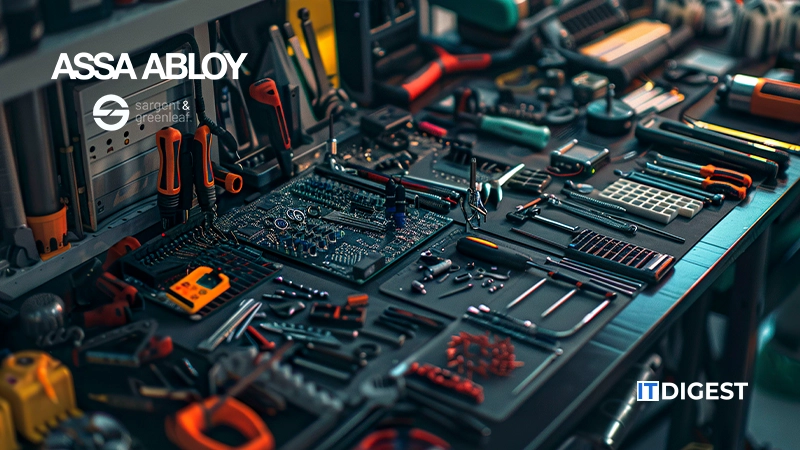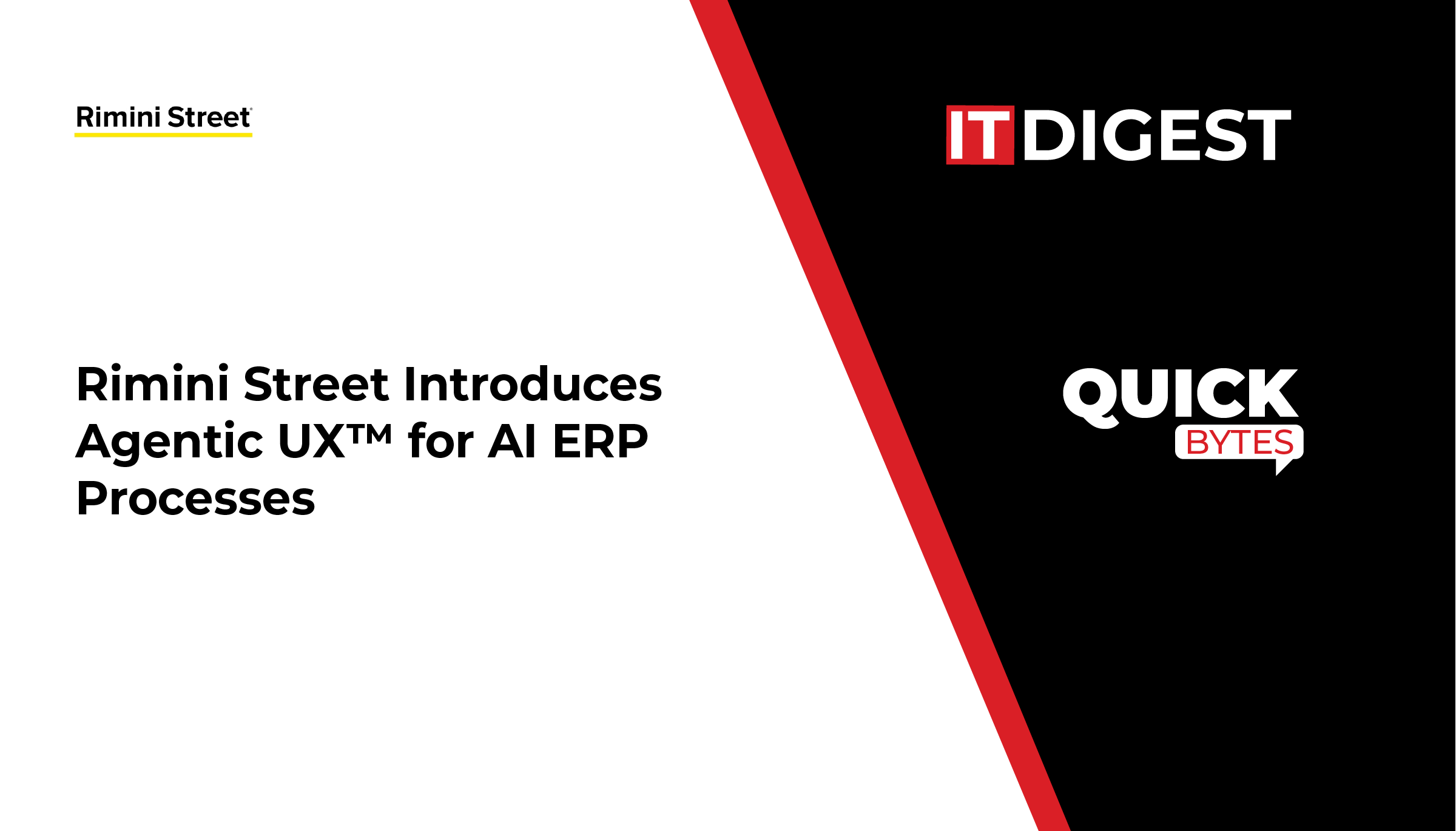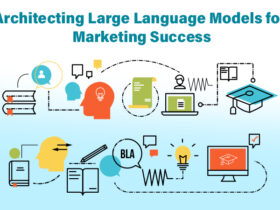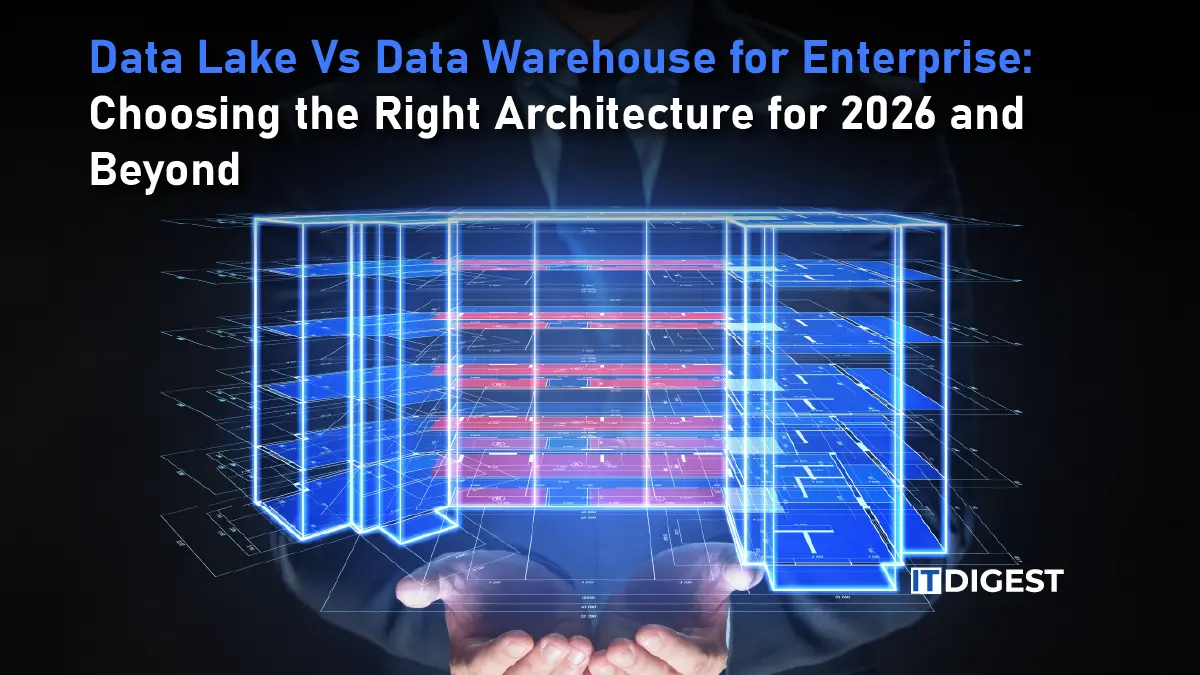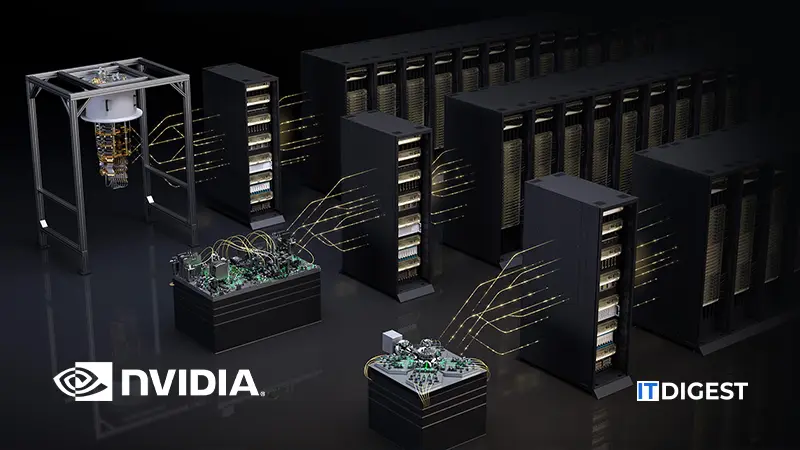NVIDIA announced its new interconnect architecture, NVQLink™, designed to tightly couple quantum processors with classical supercomputing infrastructure. According to the company, NVQLink offers a high-speed, low-latency “open system architecture” that enables quantum processing units (QPUs) to link directly to GPU-based computing systems specifically high-performance GPU clusters used in scientific and AI workloads.
Among the key points from the announcement:
-
NVQLink supports integration of 17 quantum-processor builders, five controller-builders and nine U.S. national laboratories.
-
It enables the connection of quantum processors to supercomputing labs such as Brookhaven National Laboratory, Lawrence Berkeley National Laboratory (Berkeley Lab), Oak Ridge National Laboratory, and others.
-
NVQLink is integrated with the company’s software stack (notably CUDA‑Q) to support the hybrid model of computing that combines CPUs, GPUs and QPUs.
-
CEO Jensen Huang described NVQLink as “the Rosetta Stone connecting quantum and classical supercomputers — uniting them into a single, coherent system that marks the onset of the quantum-GPU computing era”.
In short, NVIDIA is positioning NVQLink as the connective tissue for the next generation of computing systems—hybrid quantum-classical machines that can process workloads neither domain could handle alone.
Why This Matters for the Quantum Computing Industry
The announcement arrives at a pivotal moment for the quantum computing industry. While QPUs remain nascent in terms of widespread commercial deployment, the gap between experimental quantum systems and meaningful business use cases has been a major bottleneck. NVQLink addresses several of those bottlenecks and therefore carries important implications:
1. Integration and Latency
One of the long-standing challenges in quantum computing is the need for ultra-low-latency, high-throughput connections between the quantum hardware and classical control/hardware. Qubits are fragile, require error correction, calibration, and control algorithms that must often run on classical systems in real-time.
By offering a dedicated interconnect (rather than relying on generic network fabrics or typical classical-to-quantum links), NVQLink may accelerate the practical scaling of quantum machines, making quantum + GPU hybrid architectures more realistic.
2. Hybrid Quantum-Classical Workflows
Many anticipated quantum use-cases (chemistry simulation, materials science, optimization) are already being developed in hybrid form: part classical, part quantum. NVIDIA’s messaging emphasises that NVQLink enables hybrid systems that draw on CPUs/GPUs alongside QPUs.
For companies building quantum applications today, having a platform that supports these hybrid flows is key. It reduces the friction of adopting quantum hardware and may shorten time-to-value.
3. Ecosystem and Standardisation
NVIDIA’s announcement shows broad ecosystem support—17 QPU builders and many national labs. When a major player like NVIDIA designs an open architecture and brings many builders aboard, it tends to push standardisation in the industry. That in turn lowers barriers to adoption (fewer bespoke integrations), a boon for quantum hardware companies, software developers, and enterprise adopters.
4. Commercial Readiness Signal
The announcement sends a signal: quantum isn’t just a lab curiosity anymore. By tying quantum to large-scale GPU supercomputing, NVIDIA is emphasising that quantum systems must become part of mainstream compute infrastructure. That is likely to resonate with enterprise customers, cloud providers, HPC centres.
It may also influence investors and market participants: even if large-scale fault-tolerant quantum machines are still years away, hybrid systems and control architectures are moving into the commercial horizon.
Also Read: IBM Launches “Digital Asset Haven” Platform What It Means for Fintech and Regulated Enterprises
Business Impacts for Firms in the Quantum Industry
For companies operating in the quantum computing ecosystem—hardware vendors, software firms, system integrators, enterprise users—this announcement has several business implications.
Hardware and system integrators
-
QPU manufacturers can now more credibly assert that their devices can integrate into HPC/data centre environments via NVQLink, improving their go-to-market proposition.
-
Supercomputing centres and quantum labs may prioritise systems that support NVQLink (or compatible interconnects), influencing procurement decisions and architectures.
-
Vendors of quantum control systems and error-correction hardware will likely see increased demand, since the interconnect emphasises real-time classical/quantum synergies.
Software and application developers
-
Hybrid quantum-classical application frameworks gain more legitimacy; developers who build algorithms that span GPUs and QPUs could find a clearer environment for testing and deployment.
-
Software firms targeting quantum machine learning, quantum simulation, or quantum-accelerated workflows can use NVQLink-enabled architectures as part of their validation and marketing narrative.
Enterprise and industry users
-
Industries such as materials science, chemistry, finance, aerospace, pharma—all sectors targeting quantum advantage—can start planning architecture roadmaps that include not only QPUs in isolation but hybrid sets connected to GPU clusters.
-
Enterprises investing in quantum compute pilots may evaluate systems with NVQLink or equivalent interconnects as a way to future-proof their strategy and reduce risk of “quantum islands” disconnected from broader IT infrastructure.
Competitive and strategic moves
-
NVIDIA’s move underscores the increasing convergence of quantum computing with mainstream high-performance computing and AI infrastructure. Companies that remain siloed in quantum standalone systems may face competitive pressure.
-
Organisations not already aligned with key interconnect/architecture standards may need to reconsider partnerships and ecosystems to avoid being left behind.
-
For HPC/data centre vendors, supporting quantum-GPU hybrid architectures may become a differentiator.
Strategic Considerations & Challenges Ahead
While NVQLink is a meaningful step forward, the quantum-GPU hybrid era is not without challenges—and businesses should weigh the strategic landscape accordingly.
-
Software maturity: Developing reliable hybrid quantum-classical programs remains non-trivial. The control systems, error-correction layers and orchestration frameworks must evolve. NVIDIA’s platform (including CUDA-Q) is a strong step, but the ecosystem still needs broader maturation.
-
Hardware readiness and scale: Many QPUs remain experimental, with limited qubit counts and high error rates. The promise of NVQLink depends on the underlying quantum hardware scaling. The integration is necessary but not sufficient.
-
Integration cost and risk: Enterprises adopting quantum-GPU hybrids may face high integration, validation, and operational costs. The business case must be clear.
-
Standards and vendor lock-in: While NVQLink is described as open, there may still be concerns about vendor lock-in. Firms may want to evaluate portability and ecosystem openness carefully.
-
Time-horizon and hype management: Quantum computing remains a long-term play in many respects. Businesses should avoid overcommitting too early while balancing the need to stay ahead of disruption. As one analyst noted, quantum could pose an existential threat to GPU-data-centres if/when quantum becomes dominant.
Conclusion
The introduction of NVIDIA’s NVQLink marks a significant milestone in the evolution of quantum computing infrastructure: it brings quantum processors and GPU supercomputers together in a unified architecture. For the quantum industry, this means stronger pathways to hybrid architectures, better integration with existing HPC/AI ecosystems, and clearer enterprise adoption signals.
For businesses in the quantum ecosystem—hardware vendors, software developers, integrators, enterprise users—the implications are broad: from shifting competitive dynamics to new architecture planning requirements. Yet the journey remains long, and those planning quantum-enabled strategies must couple optimism with pragmatic thinking about readiness, standards, integration, and real-world business value.
In sum, NVQLink may well accelerate the era of “quantum + classical + GPU” computing. The challenge for businesses now is turning that possibility into practical, deployable systems—and deriving value from them before their competitors do.




